21 November 2018 Concept Car
The history of the SUV is somewhat different, as it has to start with criticism. Here are some popular opinions on SUVs:
SUVs are monstrosities on wheels. They consume far too much petrol. They’re unsafe. SUVs are far too expensive and they’re effectively keeping the car industry from developing more ecologically viable alternatives.
SUVs are also by far the most popular category of cars.
In fact, some experts reckon that, within a few years, some of the leading vehicle producers will stop producing traditional cars altogether. Already today, brands like Ford or General Motors have expanded the size of their SUV selection at the expense of saloons and mid-size cars. Volkswagen until recently didn’t seem to believe in the SUV. Now, it has quickly changed gears and today offers the T-Roc, the Tiguan and the Touareg.
Despite all the criticism (former mayor of London, Kevin Livingstone called 4×4 drivers ‘idiotic’) there seems to be no stopping the Sports Utility Vehicle. In this special, we’ll investigate the topic in depth.
We’ll explore the history of the SUV, analyse the reasons for its stunning success and deal with some of the criticism levelled against it. Finally, we’ll take a look at the very best SUVs currently available.
It certainly looks that way.
Until 20 years ago, the saloon was the default car of choice both for larger families and business purposes. Around the beginning of the new Millennium, saloons were the strongest car segment. In 1999, 15% of all new cars sold that year were saloons. Since then, their share of the market has slowly but surely dropped to a mere 6%.
In turn, SUVs have shot up the rankings. If we combine crossovers, 4x4s and classic Sports Utility Vehicles in this category, they’re by far the most popular segment at the moment. Manufacturers like Vauxhall, who seem to have regarded the phenomenon as a temporary trend, have lost ground.
That said, the saloon isn’t quite dead yet. Certainly, the big German manufacturers are still sticking to their guns. Now virtually without competition, their most recognisable models, such as the Passat, have solidified their leading position in the industry.
But the German makes, too, will have to adapt. As a report by financial newspaper Economist demonstrated, they are already falling behind when it comes to electric cars and autonomous vehicles. They can’t risk a further alienation of their potential client base.
And so, even Volkswagen have added SUVs to their portfolio. As for BMW and Mercedes, their luxury SUVs have become veritable cashcows.
If admitting defeat has been one strategy, the other has been to improve the saloon and to make it attractive again. French manufacturer Citroen has leading the way here. “Our new saloon will be a breath of fresh air – we don’t do traditional anymore,” according to Citroen boss Linda Jackson, while Citroen’s product director, Xavier Peugeot, adds: “We need to reinvent it and make it as modern and attractive as the SUV segment. We’ll see SUV design ‘codes’ expand to other segments. We try to motivate our designers. If your saloon is classical or traditional, I’m afraid you are in trouble.”
Judging by first sketches of their flagship C5, they may well be on to something here.
In 1999, few would have believed the SUV would ever turn into the car industry’s darling. Virtually unknown in Europe and little more than a popular niche in the USA, the Sports Utility Vehicle enjoyed a cult following – and that was it.
It seemed to make sense that their rise began in America. In the USA, driving long distances was common, as was navigating somewhat rougher surfaces. The SUV, with its rugged build, spacious interior and high seating position, was an ideal solution. In Europe, meanwhile, where most of the driving either took place in city traffic or on the well-built Autobahn, there didn’t seem to be a rationale for choosing offroad.
This was also the main reason for Ken Livingstone’s passionate dismissal of 4x4s: They were simply unnecessary.

The thing is: Just like many others, Livingstone was wrong about the SUV. It is by no means exaggerated to claim that Sports Utility Vehicles and Crossovers are dominating the market.
In 2015/16, they overtook lower medium cars and became the world’s biggest car segment, making up almost 23% of all car sales. Only 2 years later, that percentage shot up to a staggering 36.8%. This means that more than every third car sold at a dealer is an SUV.
As if this wasn’t impressive enough, SUVs kept the industry afloat. If it hadn’t been for their impressive growth surge, the car industry would probably have shrunk over the same period. SUVs have become the pivotal factor deciding the fate of the entire car trade. Little wonder manufacturers are all over them.
One of the key factors for the astonishing success of the SUV segment is the diversity of its palette. Within just a few years, the category has expanded into small and extra large vehicles, into highly affordable offerings and extreme luxury models. This has made it possible for SUV fans to always find a model that suits them, regardless of their budget or preferences.
The luxury segment in particular has been one of the key factors. Profits margins are high in any segment of the SUV category. But they’re almost off the charts in the high end department.
Where, exactly, this luxury category begins, is up for definition. Audi’s flagship Q7 starts at around 65.000 Euros, as does the tremendously popular BMW X5. At around 75,000 Euros, the Porsche Cayenne is only slightly more expensive.
Certainly, these cars will be outside of most people’s reach. But what to say, then about the Bentley Bentayga V8 (€175,000), the Lamborghini Urus (> €200,000) or the Rolls Royce Cullinan (€315,000)?
And if that makes some of them sound and look slightly ridiculous, then that may just be exactly what the manufacturers want. Says Giles Taylor, Rolls-Royce’s director of design:
“At this point in the history of automotive design, SUVs have become homogeneous and ubiquitous. The label SUV is now applied to anything with a two-box silhouette and the least suggestion of going off tarmac. [So] we envisioned an authentic, three-box, all-terrain, high-bodied car with a convention-challenging design and absolute capability that would satisfy the adventurous urges of our clients.”
Note the use of the word ‘urges’ instead of ‘needs’ here, and you get a pretty good picture of what these cars are really about.
It is not our goal to ridicule the Bentagya, Urus and Cullinan. They are all, frankly, pretty spectacular looking vehicles. Rather, the point is to show just how far the SUV has come: From a sturdy family-oriented take on the jeep to a show-off luxury item.
How could it come to this? As with every industry change as incisive as this, it is all about a long-time neglect of consumer needs.
Lookers.co.uk sums up the specific benefits of SUVs thus:
Let’s dismiss, for a second, the fourwheel drive, which is not a unique advantage of SUVs. The other points seem somewhat unspectacular at first. However, they have been the driving force between all the major shifts in the motor industry.
In the 80s, the family seemed on a decline. Smaller package sizes for food were on the rise, as were notoriously impractical sports vehicles like the Countache or Coupes. From the end of that decade, onwards, however, families started to become bigger again. When this happened, there were desperately few car choices to accommodate this change.
SUVs did not look quite that flashy. But they offered plenty of space, both for passengers and luggage. So much space, in fact, that they successfully beat the mini van, which had seemed like the obvious solution for quite a while.
And then, of course, there’s the influence of female drivers. Women have lead the way for most technological changes over the past decades, so it can’t be a surprise that they have been a vital influence on the surge of SUVs as well.
Initially, their more practical outlook may have been the most important reason to opt for an SUV. Rather than invest into the sports car may men would dream of, they tend to focus on what they really need. As mentioned, SUVs had some undeniable benefits over most other cars on the market. This made them an obvious choice for women.
Some of these practical arguments include:
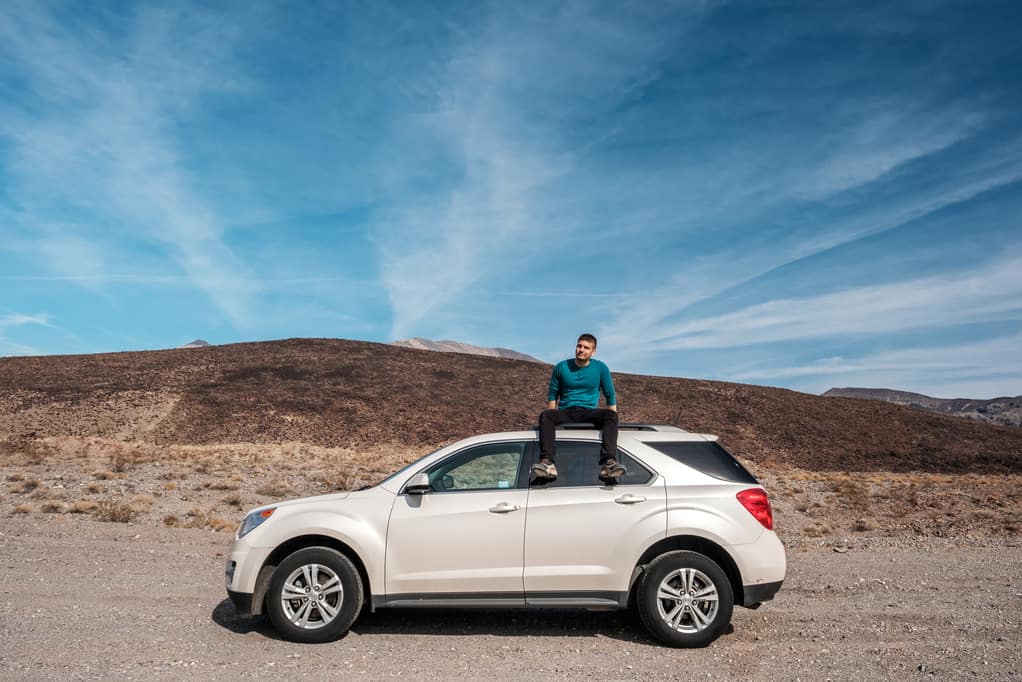
What’s more, the elevated seating position provided women, on average smaller than men, with a better view of traffic than a saloon or small city car. Ironically, it also seemed to ‘masculinize’ driving behaviour in a bad way, according to a study.
And then, of course, many women simply think SUVs look great and want one as much as a male driver might want a sports car. 40% of female car buyers are single. This points to the notion that these vehicles are a ‘treat’ for which they are happy to spend a little more cash than usual.
Around the 2000s, then, there was a clear demand for some of the features that the SUVs uniquely offered. The industry quickly responded by diversifying into a wide range of different SUV body types.
These include the following SUV market segment classifications:
There is something slightly absurd about these vehicles, which tend to be based on a supermini chassis. SUVs are all about space, after all, whereas the Mini SUV will forever remain a relatively small proposition.
And yet, this has been a particularly popular segment, combining interest in flexible, easy to manoeuvre and park cars with the allure of an SUV.
These two segments have been behind the triumphant comeback of the SUV in the past decade. Although still referred to as Sports Utility Vehicles, these cars should more correctly be termed crossovers. We’ll explain the difference later in this article.
For now, let it suffice to say that compact and mid-size SUVs offer slightly less space and power than a full-size SUV. But they more than compensate for that with better fuel economy.
These are still most popular in the USA, although some Asian countries have also discovered their interest in them. The bigger they get, the more they begin to resemble trucks, both in terms of their looks and technical characteristics. As soon as you enter the extended length category, you will be able to seat 8-9 people, which is really quite amazing.
The evolution of the SUV is bound to continue as more and more manufacturers are expanding their palette to meet customer demand. Right now, for example, Volkswagen has a measly 4 SUV models on offer. The company has, however, announced that they will increase this number to 20 over the next two years. So you can expect even more types of SUV very soon.
None of this was to be expected in the early days of the SUV as a stand-alone category in the car industry. In fact, for the first decades of its existence, Sports Utility Vehicles were produced almost exclusively for the army or other big organisations, serving functional purposes. To see just how far it has come, let’s take a look back at its long and fascinating history.
Depending on your point of view, the history of the SUV begins either
Certainly, there were precursors to the SUVs that are crowding our streets today. Even if some of them seem far-fetched, they all combine into a family tree of sorts, with its own lineage and patterns of development.
The very first entry into this genealogy is the so-called depot hack.
The depot hack was a purely functional vehicle that looked more like a horse carriage minus the horses than a car. The Owls Head Transportation Museum in Maine explains the origin of the somewhat strange name:
“Long distance travel at the time was done by train, and almost everyone travelling by train carried luggage. Depot Hacks were designed to carry passengers and their luggage from the train station, or depot, to their final destination, typically a hotel. Today, we call this type of vehicle a taxi, which is what the word hackney means. Hack is an abbreviated form of hackney.”
This also explains why another familiar term for this type of car was a ‘station wagon’.
So what does the depot hack have to do with the SUV as we know it today? Simply, it was a functional vehicle with a car body mounted on a truck chassis. Which is precisely the direction the SUV would soon take.
The Chevrolet Suburban was also a depot hack: In its first iteration, in 1933, its main purpose was to take passengers from and to train stations. At that time, it was mainly built from wood and was not available for average drivers.
Only two years later, however, Chevrolet made a 360 degree turnaround on its concept. Suddenly, the Suburban sported a metal body and was aimed at large families. It seemed to make perfect sense. The car could house up to eight passengers and offered plenty of baggage space to boot.
The most astounding thing about this vision is that it was purely based on the marketing chutzpa of Chevrolet. The first generation Suburban still looked very much like a depot hack or carryall and had very little features that distinguished it from a station waggon. Chevrolet merely made customers aware of the fact that this car could also be ideal for home use. It thereby initiating a development which would continue to gain momentum until the present day.
Amazingly, the Suburban would remain in production until today – with only a very brief phase in which it was rebranded as the Yukon. This makes it one of the longest running car series in history.
As so often, war would speed up the process of technological development. Around 1940, Chevrolet introduced a second generation of Suburbans, which featured both a cosmetic touch-up as well as a variety of technical improvements. The new Suburban was now a lot more rugged and would soon be used by the American Army during WWII.
The Armed Services needed something more specific, however. Whereas the Suburban was an excellent transport vehicle, it was also somewhat big and not quite as easy to manoeuvre as would have been desirable. And so, the military asked car manufacturers to come up with a design that was, according to lookers.co.uk, “4 wheel drive and tough, durable and capable of carrying soldiers over rough terrain.”
Emerging victorious from this call for bids was the Willys Overland, which would soon be known by its nickname.
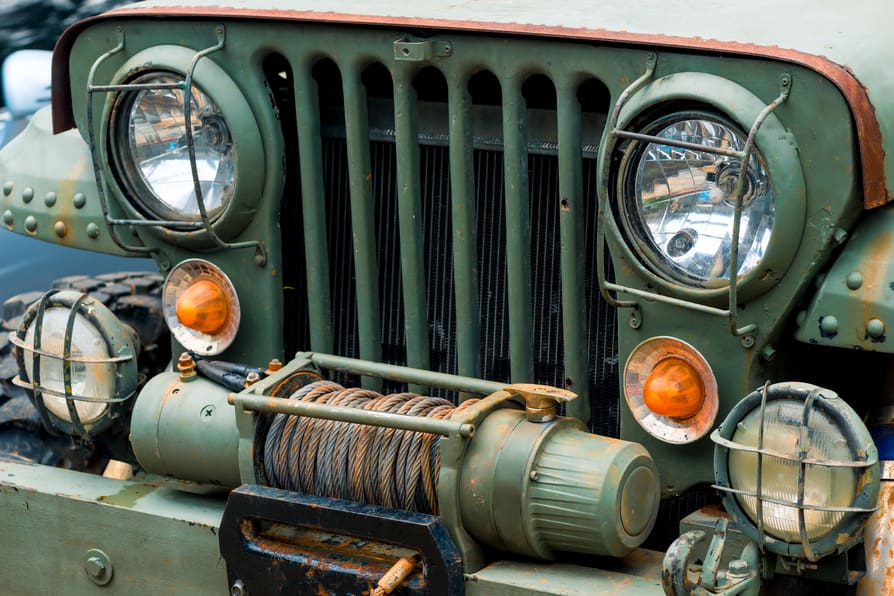
The origin of this strange name remains mysterious to this day. Some believe the technical term for the Overland was at first a General Purpose vehicle, or GP. At some point, the abbreviation was then slurred to ‘jeep’. Others maintain that the word ‘jeep’ was used to describe a fresh recruit at the time – certainly not an entirely improbable explanation. Finally, some trace its roots back to a character from a Popeye comic strip, Eugene the Jeep, which had a lot of fans among the army.
Be it as it may, the Jeep would turn out to be an incredibly useful car – even after the war had finally ended in 1945.
At first sight, the Jeep looks somewhat underwhelming. In this case, however, first looks were decidedly deceiving.
In battle situations, the jeep offered a maximum of durability with perfect allround driving qualities. Under less extreme conditions, it turned out to be the ideal leisure vehicle.
One of the reasons that the jeep would become such an iconic vehicle was that it already had a huge amount of fans when it was introduced to the general public: During the war, 700,000 of them had been manufactured. Which meant that almost every soldier had at one point or the other come into contact with it.
But there were practical reasons, too. A lot of what made the jeep an incredible army vehicle also made it a brilliant and even charming, leisure car. It had plenty of space and was equally at home on the road, off the road and even in the sand. Plus, it could carry an entire family, plenty of friends and a surfboard, too.
It is testimony to the timeless quality of the design that many today are no longer even aware of its past in the military.
Although it was not conceived for use in WWII, the Land Rover shares many similarities with the original Jeep. In fact, the specifications were remarkably similar, something which is apparent at first sight. Things are even clearer if you take a look at its close cousin, the Land Rover Defender.
By now, however, this symbol of British pride has attained the status of a design classic in its own right!
The Land Rover has frequently been described as one the greatest offroad vehicle of all times. And it has undeniably made a name for itself as a car for every kind of environment – from the desert to the North Pole, from the Savannah to the tropics. And yet, when the brothers Maurice and Spencer Willks actually planned their own version of a jeep, expeditions were probably the last thing on their mind.
Quite on the contrary, the initial intention was for the Land Rover to function as a working vehicle for farmers. During the planning stages, the benchmarks for designer Mauric Willks were tractors!
At the same time, its use as an allround functional vehicle was always part of the plan. It is certainly no coincidence that the very first prototypes were built on a jeep chassis.
The Land Rover remains one of the most fascinating vehicles of the Post war period. The Willks brothers had never intended for it to remain on the market for more than a few years. The plan was to use income from Land Rover sales to re-kindle their car business. As it turned out, people did not want cars, they wanted more Land Rovers. And so, the car remained in production until 2015.
Remarkably, during this 67 year run, there were hardly any changes to the general design. The final Land Rover of the original series, which rolled off the conveyor belt sometime in 1985, still looked almost identical to the very first one from 1948. And even the follow-up model Defender, which was assigned the task of leading the brand into the next Millennium, retained the striking, ultra minimal look, except for a few minor revisions.
Already in 1949, the company had added a second option to their catalogue: A Land Rover station waggon. This which raised the potential passenger count to seven. Land Rover station waggons would never turn into a big success. Nut they did pave the way for Land Rover’s second stroke of genius, the Range Rover.
In 1970, Land Rover surprised everyone by introducing a spin-off station waggon, similar in design to the classic Land Rover, yet with a unique twist.
By this time, Jeep had already introduced the Jeep Wagoneer, which many consider the very first luxury SUV. Indeed, the Wagoneer deserves a lot of praise. Although it was still based on a truck chassis, its passenger compartment looked a lot more like a regular car interior. Looking at pictures of these first versions, it almost didn’t look like an offroad vehicle at all. Right from the start, it included a plethora of high-end accessories, from classy radios to air conditioning as well as a variety of technical innovations.
The Wagoneer would remain in production for decades, turning it into an icon. If you compare subsequent model generations with each other, you will see the car gradually transform into the shape we today associate with an SUV.

The Range Rover shared many details with the Wagoneer.
It had plenty of space, was based on an evolutionary jeep design and it was a luxury car with a hefty price tag.
At the same time, the RangerRover had a few features which set it apart from its American competitor. For one, it was still truly an offroad machine. The RangerRover, in fact, was better equipped for heavy 4×4 action than the original Land Rover and would come to be the go-to-vehicle whenever things got rough and tough. Aptly, its interior looked a lot more spartan, with very few comforts and a cabin which was designed to be hosed down for cleaning.
And yet, with its elegant exterior and its far more spacious interior, the Range Rover embodied everything we expect from an SUV today.
This was even clearer in the second model generation, which had quite a lot more convenience features and re-defined the Range Rover as an executive vehicle. From then on, each new re-design has taken the Range Rover more upmarket. Eventually, this culminated in the Evoque, a breathtaking and breathtakingly expensive variation of the original concept.
By this time, the Range Rover had long turned into more of a niche offering. Although its pioneering role for the SUV market can not be over estimated, other manufacturers soon eclipsed it in terms of sales and mass appeal.
Again, Jeep lead the way. The follow-up to the Wagoneer was a car called the Cherokee. The Cherokee was smaller than the Wagoneer, less luxurious and less powerful. At the same time, it still had plenty of space, was an incredible off road vehicle and a lot more affordable. The company referred to the concept as a ‘sportswagon’.
If the Wagoneer was truly a special duty vehicle, the Cherokee was a car for everyday use. And this is exactly what drivers in the USA saw in it. It turned into an overnight success.
For some time after its introduction in 1983/84, the Cherokee was without a serious competitor. Every month, it would convince new converts. The public no longer regarded it as a truck, but rather as a sedan in disguise. In this sense, the Cherokee was truly a revolutionary car which essentially laid the foundation for the current SUV craze.
Until its gradual fade-out in 2001, it would sell 3 million cars.
The Cherokee was a milestone in more than one regard. Its biggest contribution to the evolution of the SUV was its construction. Things will get a little technical now. But we can promise you it’ll be worth your time.
Up until the Cherokee, all SUVs had been body on frame construction. This places the passenger cabin on top of a ladder-type chassis, so the vehicle essentially consists of at least two parts. The Cherokee changed this around and used a unibody or monocoque construction. With this design, the car body and the chassis are one unit and can not be separated from each other.
In the early days of the automobile, many if not most cars were body on frame. There were many reasons for this, not least that this type of car is easier to engineer.
For one, the body on frame design is more resistant to twisting. For all pulling and towing purposes, this makes the car sturdier and more robust. The same advantage also holds for racing events, where car frames are subjected to extreme force.
But there is more. A fixed frame allowed manufacturers to make adjustments to their body style quickly, without having to re-engineer their entire product palette. It also allowed for easy diversification strategies.
You can combine the same ladder-type frame with a wide range of body types. So, using just one chassis, you can construct anything from saloons and hatchbacks to station waggons or even pick-ups. This makes it possible to efficiently cater to the needs of different target groups.
At the same time, the rigidity of the construction makes a body on frame design rather inflexible. And the fact that it is composed of two parts also means that it is rather vulnerable in case of a collision. This is why, despite the aforementioned benefits, manufacturers started looking for alternatives.
The unibody, sometimes also labelled ‘monocoque’, is the logical conclusion from their research. In a unibody car, the body and the frame form a single, coherent unit. This type of vehicle can not be separated into a chassis and a body anymore. If you were to remove the chassis, the wheels would literally fall off.
In terms of product development, this naturally implies a somewhat larger time to market. Each new generation of a model which involves a new body type will by default be an entirely new design. Different versions of the same car will also tend to be based on a slightly different chassis’.
On the upside, however, a unibody offers a far more fluent driving experience. It is easier to manoeuvre and can be turned around more quickly. It is also weighs a lot less and is thus more fuel efficient. Finally, the unified construction makes it more resistant to impact damage and thus safer. (On the other hand, in case of a serious collision, a unibody is more likely to total than a body on frame).
To understand why the monocoque changed the SUV forever, all you need to do is to take a pick up truck or a transporter for a ride. Let’s take the famous Ford F series as an example. This is one of the most widely sold vehicles on the planet, with almost a million sold each year. Some claim that it well on its way of gaining the number one spot soon.
The F series is designed to carry a lot of heavy cargo across long distances. This means it requires a lot of power and torque. For these reasons, the F series is based on a body on frame construction.
If you’re driving long, straight roads, as you might in the USA, where the vast majority of these pickups are sold, then this is fine.
Taking tight turns can turn into a nightmare, as can navigating narrow side streets. These vehicles are simply not built for anything that requires precision work.
By switching to a monocoque, the Cherokee suddenly gave drivers the impression of still having the power and functionality of a SUV, while at the same time gaining the comfort and convenience of a regular car. A unibody SUV is perfectly at home in the city, while also offering the traction and support you need on the road.
Today, we have got used to this sensation. In 1984, however, it felt like a revelation. No wonder consumers were flocking to the Cherokee in droves.
Ironically, it seems as though the unibody may be making a comeback. The reasons are somewhat obvious: For the few customers who truly want, need and appreciate a serious offroad experience, the monocoque is simply not the ‘real thing’.
This is also the reason why the Range Rover remained such an alluring proposition for such a long time. Its supposed deficits in terms of convenience and comfort were considered advantages by a small crowd of aficionados.
If you, too, are interested in taking a challenging trip and feel a unibody is not up to the task, Topspeed has listed six SUVs that still feature body on frame constructions:
Times were different in the 1980s. If a manufacturer were to stumble upon a similarly revolutionary concept as the Cherokee today, there’d be plenty of viable competing alternatives available tomorrow. Back then, however, product development cycles were long and slow. This meant the Cherokee had the playing field to itself for quite a while.
It would take until 1991, before Ford came up with its take on the ‘sportswagon’. But when it did, it would instantly turned the entire market upside down.
The logic behind the Explorer was simple enough: make the Ford Bronco, a giant bulldozer of a car, smaller and more refined to be able to compete with the Cherokee.
The car that resulted from this simple plan was still pretty big and powerful. By definitions, this was still a ‘truck’. But it was also elegant, comfortable and convenient in a way that no other car of its time was.
Motortrends has captured the furious energy of those early years in a paragraph of staggering statistics:
“The first-generation Explorer sold more than 300,000 units per year — outselling the Jeep Grand Cherokee and Chevrolet S-10 Blazer by significant margin — and more than 400,000 units a year by the end of the second generation. Ford sold more Explorers than all import SUVs combined. By 1994, it was the ninth best-selling vehicle in the U.S.”
The golden age of the Explorer lasted between 1996 and 2003. Each year within this period, it sold just under or in excess of 400,000 cars. Over time, this added up to a lifetime total of more than 7 million vehicles.
One of the reasons for its success was that the Explorer would come in a wide range of different versions. From two door models to four door ‘quattroportes’, from stripped down basic models to more luxurious iterations, the choice was yours. This allowed the Explorer to quickly infiltrate the market from different angles, igniting a whirlwind that left its competitors gasping for air.
But there was more to its success than that, as howstuffworks explains:
“The Chevrolet S10 Blazer and GMC S15 Jimmy, were at that time nearly a decade old. And although all three brands offered first-time four-door versions that year, the Explorer was the most refined and carlike. This was in line with Ford’s plan of targeting different audiences with two body styles. The new four-door Explorer aimed to be family friendly and on-road comfortable — a modern take on the traditional car-based station wagon. The shorter two-door Explorer, which replaced the Bronco II in Ford’s truck lineup, courted a younger crowd more interested in sport than utility. A third factor was its just-right size. Many SUVs in those days were body-on-frame models derived from pickup trucks. But the Explorer showed less kinship with Ford’s compact Ranger pickup than the Chevy/GMC models did to their pickup parents. Indeed, the four-door Explorer was something new: a midsize SUV, not a compact.”

The fact that the Cherokee and the Explorer were enjoying their moment in the spotlight got manufacturers thinking. Clearly, they had not been focusing enough on families and on practical values.
Today, we take it for granted that the SUV is the ideal solution to this neglect. In the 70s, 80s and 90s, however, this was by no means a certain outcome. In fact, for quite some time, the minivan seemed a far safer bet.
If the modern SUV is the re-styling of the military jeep as a civilian family vehicle, then the minivan is the update of the delivery van as a leisure car. The idea seemed to make a lot of sense:
Looking back, it is not quite clear where and how the Minivan faltered. Certainly, until the mid-90s, it was doing great.
In the US, it made its debut almost exactly at the moment that the Cherokee set about changing the face of the SUV. In 1983, Crysler introduced three different minivans, all of which would turn out to be massively successful: The Plymouth Voyager, the Chrysler Town and Country, and the Dodge Caravan.
This triple whammy has sometimes been praised as a stroke of genius by then Crysler boss Lee Iacocca. More realistically, he was not the first to come up with the idea.
Already by the late 60s and 70s, Volkswagen was producing a version of its iconic Type 2 van which had many of the hallmarks of Iacocca’s minivan. Perhaps in keeping with its time, this vehicle had more of a reputation as a hippie-dream than a family car. But in general terms, everything was already there.
Still, the minivan turned out to be a massive success for roughly a decade. European manufacturers were quick to pick up on Crysler’s innovation, leading to some of the most appreciated designs of the segment, including the classic Renault Espace.
And yet, in the mid 90s, the hype around the minivan started to subside. The Renault Espace is a good example. The Fourth generation of the model, introduced in 2002, took the concept to its limits, minimising weight and maximising fuel efficiency as well as interior space. And yet, it was sometimes characterised as ‘a bit unweildy’ and did not quite live up to expectations.
Until 2004, the Espace had been one of Europe’s most popular vehicles. In 2003 and 2004, it sold 63,000 in total. From 2005, this fell off dramatically, until it hit rock bottom in 2014, with sales of under 7,000.
The most popular explanation has generally been to link the drop in minivan sales to the rise in SUV sales. This makes a lot of sense historically. After all, the ascent of the Sports Utility Vehicle starts right at the time when the minivan had plateaued.
And yet, this is only half the story.
In an interesting article, carfoundme.com has claimed that “the minivan would change the SUV, not the other way around.”
As counter-intuitive as this observation may sound, it hits the nail right on the head. It is not that a complete turnaround in consumer needs made the minivan suddenly seem redundant. It is also not true that consumers suddenly became irrationally drawn to heavy, fuel-gobbling monstrosities. Rather, the SUV strategically re-appropriated some of the minivans best features and integrated them into its own concept.
By pure logic, this made the SUV the better choice for almost every single potential minivan customer.
By going from body on frame to unibody and by radically improving aerodynamics, the SUV found a sweet spot in terms of its fuel efficiency. Saloons and minivans were still ahead, but the margin was no longer as drastic as to scare most drivers off.
Rather than fight off the criticism about SUV safety, manufacturers instead set about making serious improvements. And they found innovative solutions to emulating – if not quite matching – the unparallelled comfort of the minivan.
Thanks to the differentiation of the SUV market, these advantages were now available in a wide range of cars, from the compact city crossovers to the extra large traditional SUVs. Some of these cars were still firmly family-oriented. Most, however, made sense for a single or two person household. In comparison, the minivan remained stuck to its image of a family transporter and found no way of transcending its niche.
Although there are signs it may be staging a small-scale comeback, it is unlikely it will ever return to its golden age – as much as it may have influenced the design and concept of the car that would overtake it in a storm.
But there is another simple reason why the minivan won’t be making a comeback and why the saloon is probably destined to turn into a footnote in history: SUVs are just too profitable for car manufacturers!
In fact, the entire reason why American manufacturers were eager to develop the concept were to undermine new environmental regulations. These laws punished larger cars and sought to incentive smaller vehicles. Trucks, however, were either exempt from legislation or subject to far more lenient laws.
As a consequence, SUVs were mounted on top of truck chassis’ to bypass these regulations. In a way, the SUV was a (rather successful) attempt to keep pretending as though we’re still living in the 1950s: Fuel was cheap and cars could guzzle as much of it as they wanted.
Most consumers regarded it as a premium vehicle and were willing to pay several thousand Dollars on top of a comparable saloon or hatchback price. This makes car finance for poor credit history harder. But it was good news for manufacturers, whose saloons and hatchbacks were a loss business:
“U.S. automakers could enjoy profit margins of $10,000 per SUV, while losing a few hundred dollars on a compact car.[48] For example, the Ford Excursion could net the company $18,000, while they could not break even with the Ford Focus unless the buyer chose options.” h
Under the hood, SUVs were rather primitive and by making use of truck under bodies, manufacturers didn’t have to spend a single unnecessary penny on research and development.
This explains why the major American car manufacturers have all but entirely shed their traditional car business and today specialise all but exclusively on SUVs.
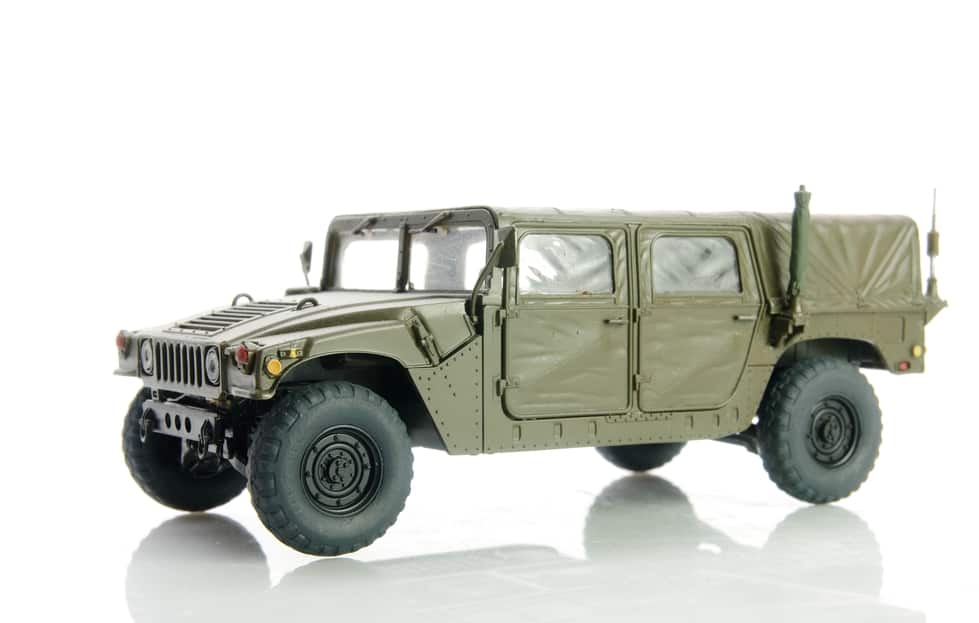
An article on the SUV would not be complete without its possibly most controversial, extreme and absurd outgrowth ever: The Hummer.
Looking back from today’s slick and elegant crossovers, it is hard to believe that this gargantuan vehicle, more tank than truck, was once the number one hipster car for the American entertainment elite. (In fact, as the legend goes, Arnold Schwarzenegger almost begged for a civilian release after seeing one of the original Humvee on a movie set)
Essentially, the Hummers were military operation vehicles which had been changed ever so discretely as to be able to drive on the highway. They were absurdly heavy and big. Hummers were absurdly bad when it came to fuel consumption. They posed a serious risk to anything that came too close to it.
They were also remarkably profitable, especially when customers added plenty of accessories to the already high bill.
The Hummer was, however, also a great example for the short-term, rather than long-term strategy that most US brands selected around this time, as the Harvard Business Review has noted. Ultimately, the Hummer would turn out to be an oddity soon to be forgotten in the history books of the industry.
By the time it had disappeared from sight, other brands had long closed the hole it had left behind.
An important part of these incisive changes is down to the influence of Asian car manufacturers. And so, it is about time we turned our attention to them.
Japanese producers had been involved in the evolution of the SUV from the very start. Already in the 1950s, on the request of the American troops stationed in their country, they designed the Land Cruiser, their own take on the jeep. Although first designs were not entirely satisfactory, Toyota eventually got it right. The Land Cruiser was given its name “from the ability, demonstrated by the very earliest versions of this iconic brand, to literally cruise across rough ground, and implies its go-anywhere ability.”
In 1967, Toyota radically changed the Land Cruiser from a police and military vehicle into a serious competitor to the Range Rover. The fifth generation, which ran almost the entire 80s, featured a to-die-for iconic design that still looks classy and impressive today. Since then, it may have grown into a luxury item. But it has never forgotten its roots as one of the most reliable cars ever built.
Despite these credentials, the Land Cruiser always seemed one step behind European and American producers. It was less about innovating the market than perfecting an innovative idea developed by others.
This would change at the beginning of the 90s, when Asian producers unleashed a whirlwind of fresh and genre-bending designs.
In 1993, South Korean car manufacturer Kia introduced the Sportage. This car would not sell well and scored badly in crash tests. What was impressive, however, was the ambition Kia had with regards to this model. They sought out high profile collaborators, partly manufactured the cars in Germany and attempted to come up with their own take on the SUV concept.
Kia would learn a lot from their mistakes and by 2016, the Sportage had become its best-selling model, scoring high marks in about every single car review.
Just a year later, Toyota entered the market with a car that looked remarkably similar to the Sportage. The RAV4 looked and felt a bit like the little brother to the Land Cruiser and was built on a platform sharing element from its famed Corolla and Carina lines. The RAV4 is an important step forward for the global domination of the SUV, as it translated this very American concept to the European and Japanese markets.
Compared to the Cherokee, the three door version was considerably smaller and it certainly felt a lot less bulky and boxy. The RAV4 was, by all intents and purposes, a city car. And it would set the tone for the further transformation of the SUV into a car for every occasion.
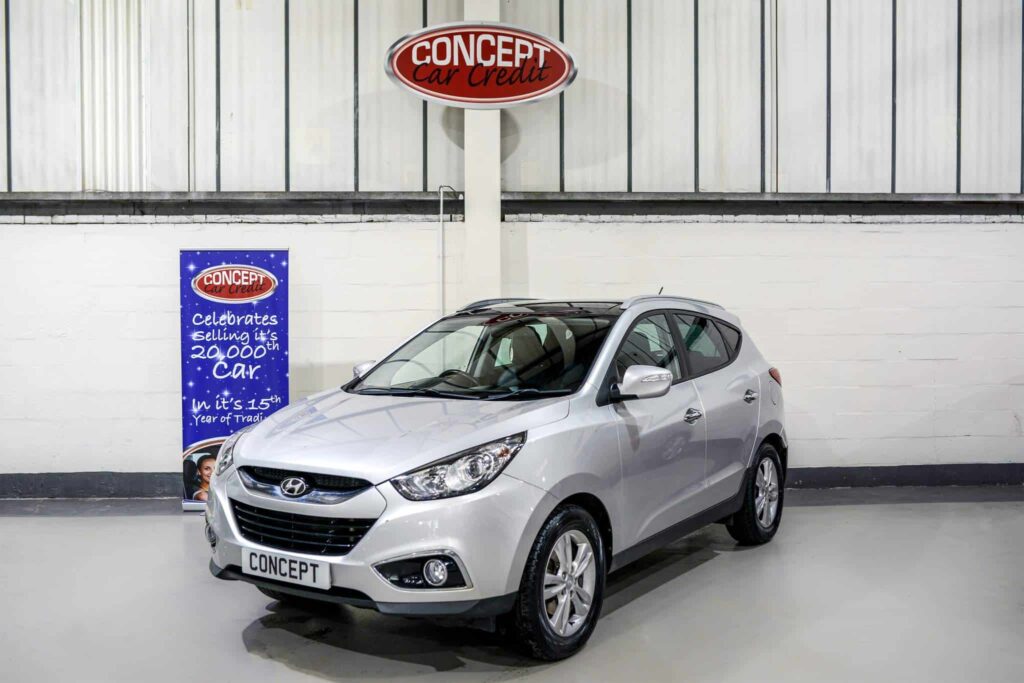
The Toyota RAV4 is often mentioned as one of the most influential cars in SUV history. This is not entirely wrong. Certainly, the RAV4 was hugely influential in Europe in converting a continent of saloon drivers into SUV fans. In the USA, however, it hardly left a dent.
Which is why our story would not be complete without the Honda CR-V. Visually, the CR-V looked remarkably similar to the RAV4. They were even almost exactly the same length. And yet, as Forbes points out, it appears the CR-V hit the right nerve at the right time:
“Honda first introduced CR-V to the United States in 1997—when body-on-frame SUVs dominated and the CR-V was referred to as a “cute-ute” or “soft-roader.” Since then, the compact utility segment has become one of the top segments in the US and Honda one of the top players; Honda says it has sold 4 million CR-Vs since 1997. The success of the CR-V is reflective of the market, as popularity of the compact utility vehicle segment has grown right along with the CR-V.”
The CR-V is remarkable in the sense that sales have continued to grow in both major Western markets, rising from 100,000 in 1997 to 378,000 in 2017 in the USA and from 16,000 in 1997 to almost 50,000 in 2017 in Europe.
With so much positive news coming from the SUV camp, a backlash was bound to happen sooner or later. Obviously, consumer interest has had its peaks and troughs anyway. During times of high oil prices, the entire idea of driving vehicles with completely unnecessary offroad capacities and questionable city traffic functionality, seemed ludicrous to say the least. All they did was waste precious resources. And they were several thousand Pounds more expensive than a comparable car to boot.
Interestingly enough, the main objections SUVs faced during their early reign came from the safety department. Their harshest critic was Keith Bradsher who, over the course of a decade, would write brutally condemning articles and a meticulously researched book on the phenomenon.
Bradsher’s main point was that the more rigid construction of SUVs made them more vulnerable to toppling over. He also claimed that SUVs offered a worst of both worlds design: Primitive components within a highly accident-prone frame.
After a long battle of words, most car manufacturers eventually conceded Brasher had a point and took appropriate counter measures, making SUVs safer. Their efforts paid off. Today, they are among the body types with the best crash ratings.
However, criticism did not end there. Although SUVs might have become safer for their drivers, they still posed a serious threat to other, smaller vehicles on the road. Because of an SUV’s higher body, smaller cars risk sliding underneath it. This can result in horrific physical damage to the car and potentially fatal blows to its passengers.
Here, too, countermeasures – called Bradsher Bars – have mitigated many of the negative effects. Still, SUVs continue to pose a potential threat to all other vehicles on the road simply because of the way they are built. This is one reason why calls to regulate them – and especially to restrict the monstrously large extra-size SUVs – have continued.
And then there’s another problem with SUVs: Their ecologic footprint. By their very nature, SUVs are heavier than their traditional counterparts, sometimes considerably so. This comes with worrying consequences. Despite constantly improving engines, better and more lightweight materials and innovative technologies, fuel consumption has not decreased over the past few years. In times of a looming ecological disaster, this is alarming.
Here, too, manufacturers responded – mainly by changing the looks and aerodynamics of their designs.
Since the Asian take-over of the SUV market, there have been next to no more truly groundbreaking technological innovations for SUVs. With the segment maturing, most manufacturers restricted themselves to fine tuning the details.
One of the few obvious points for improvements, in the 90s, was the somewhat underwhelming design of most SUVs. Although they were conceptually closer to a jeep than a saloon, most of them looked rather a little too mundane and well-behaved. And, as mentioned, their boxy body did not help their already weak environmental performance.
This would soon change with the advent of the Nissan Qashqai, which has rightly taken a lot of deserved applause.
Generally speaking, however, it seemed only logical that SUVs should not just feel a lot more like regular cars, but look more like them as well.
Although many current models are pretty breathtaking, there is a natural limit as to how far designers can go, according to an article in esteemed politics and culture magazine The Atlantic:
“The boxy edges of the SUV are also literally rounded off in most crossovers, as their designers strain to optimise the aerodynamics of the vehicle. But they can’t get too streamlined because, as Brinley put it, “the most efficient space is a box.” So, most car companies have converged on the compromise design.”
No other car was able to make this compromise seem like the future as the Nissan Quashqai.
By the time the Qashqai entered the market, there was no longer any space for truly revolutionary innovations, as we mentioned. And yet, within just two years, the Qashqai won over hearts everywhere and turned into Nissan’s most popular model in Europe in its almost 100 year long history.
This is how The Telegraph summed up the winning formula:
“Nissan’s original Qashqai of 2007 was one of the first cars to combine 4×4 styling with hatchback running costs, and this formula quickly turned it into a best-seller. Not only that, but it started a whole new class of car – the so-called crossover – leading to more than 20 rivals from different manufacturers all fighting to match the Qashqai’s phenomenal success.”
It is not easy to explain what sets a crossover apart from the modern SUVs on a monocoque platform that had come to dominate the market from the mid-80s onwards. Generally speaking, they are somewhat smaller still, even more efficient and cheaper and have all of the rough edges rounded off. Its past as an allround, offroad vehicle are still visible. But you’ll have to take a very close look to be able to spot that.
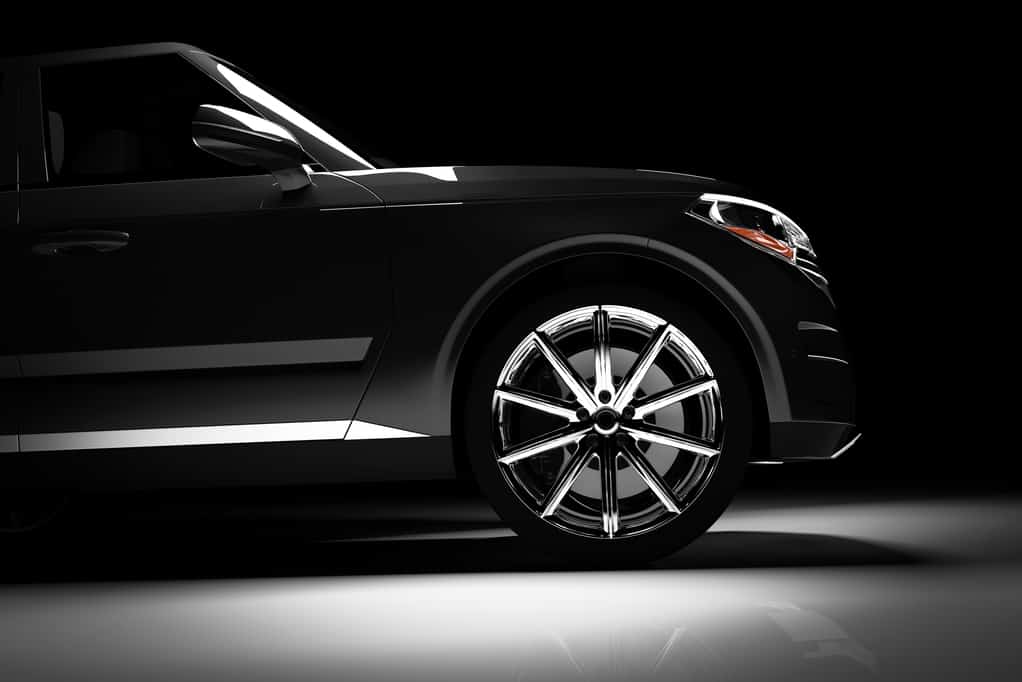
It is hard to predict the future of any industry, let alone the notoriously hard to predict car business. It would seem almost certain, however, that we can make a few basic assumptions about the direction things are going to go:
Whatever happens, the SUV is sure to keep evolving. Its constant readiness to march forward and adapt has been the basis for its incredible success story over the past decades. Why should it give up this winning formula now?
21 November 2018 Concept Car